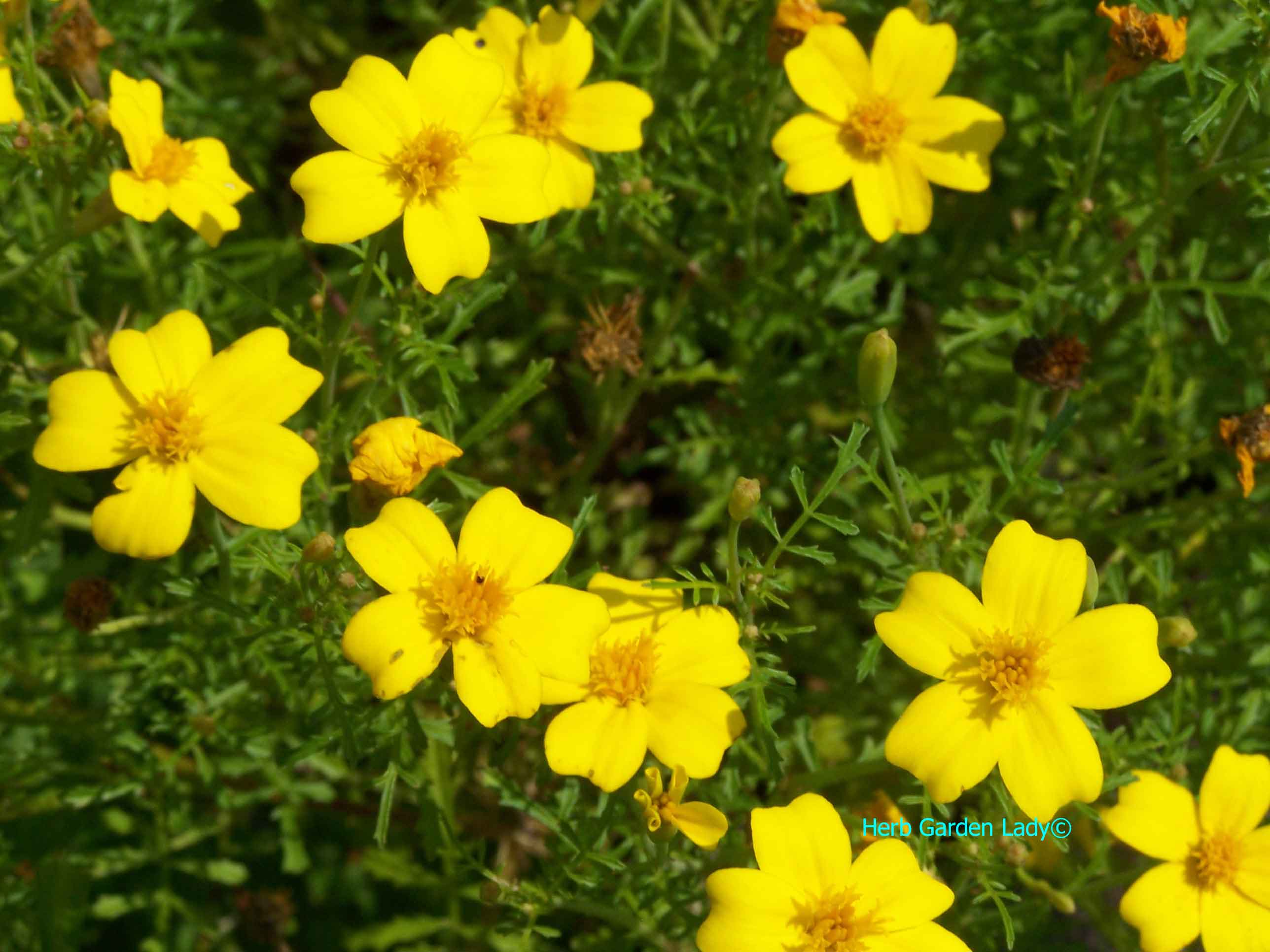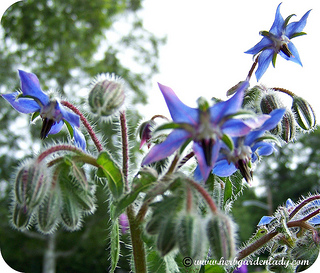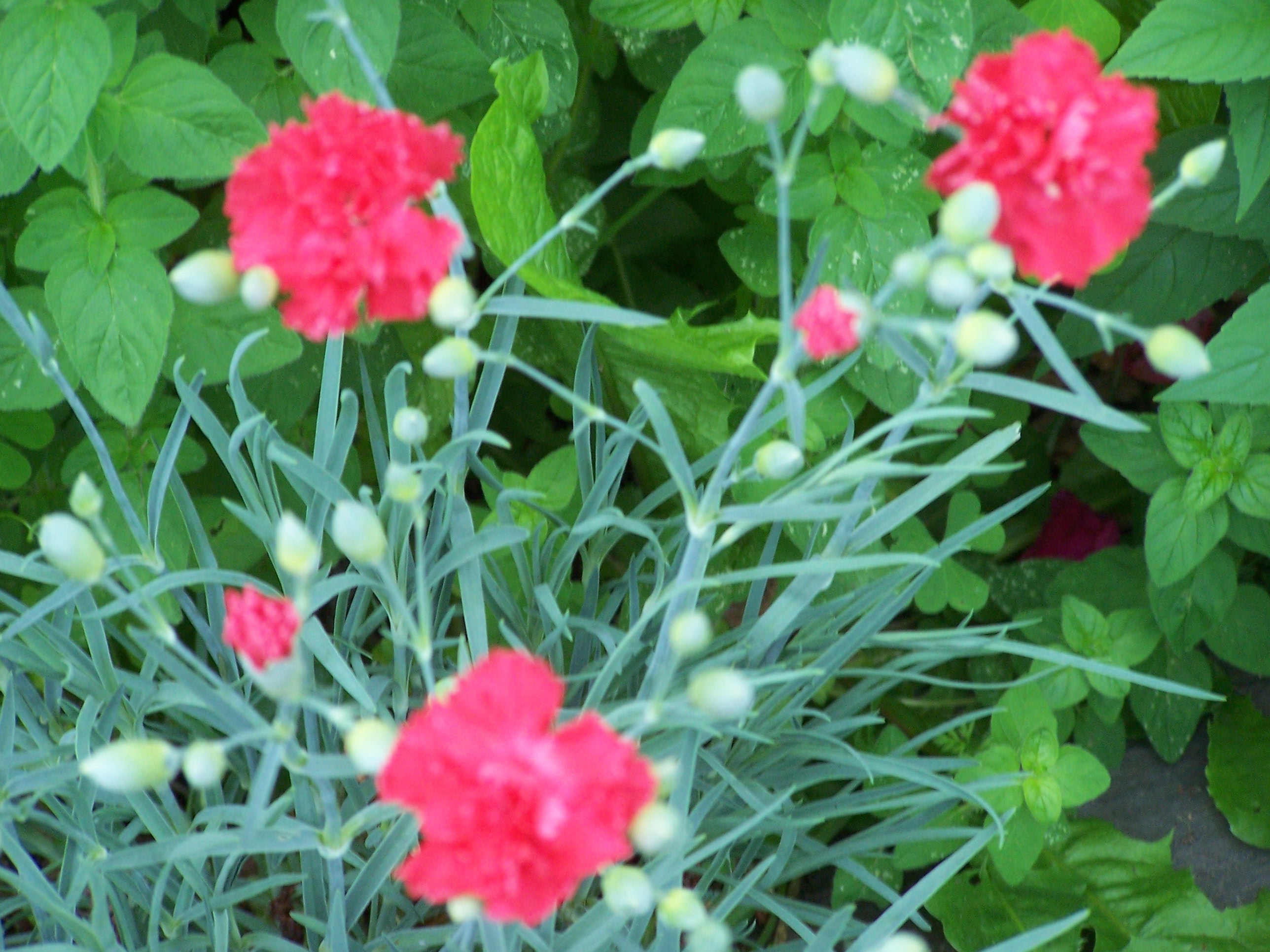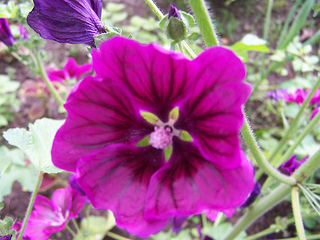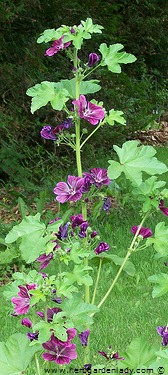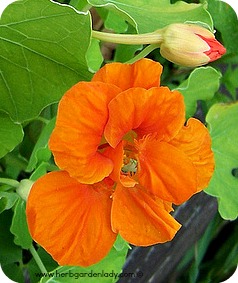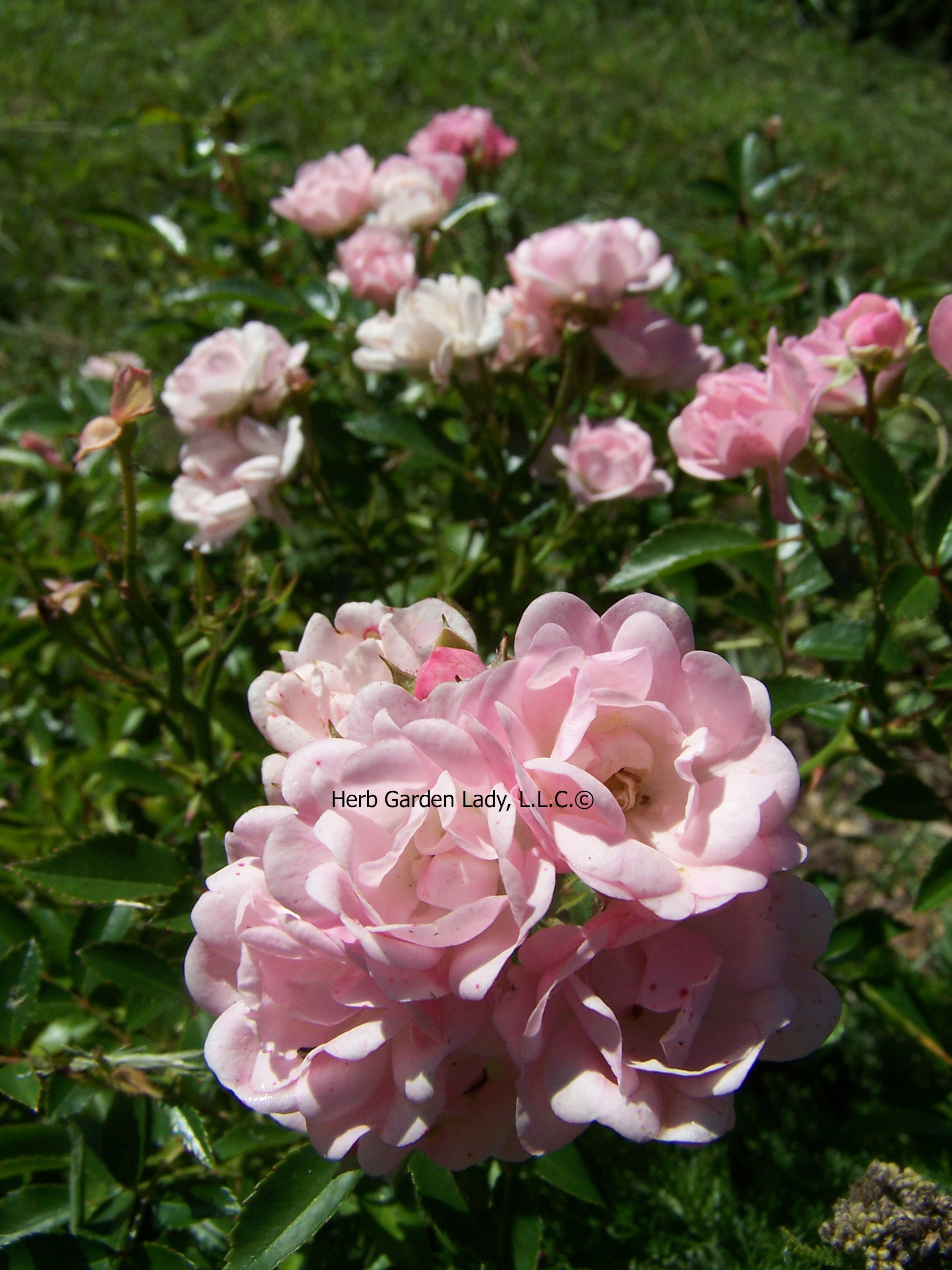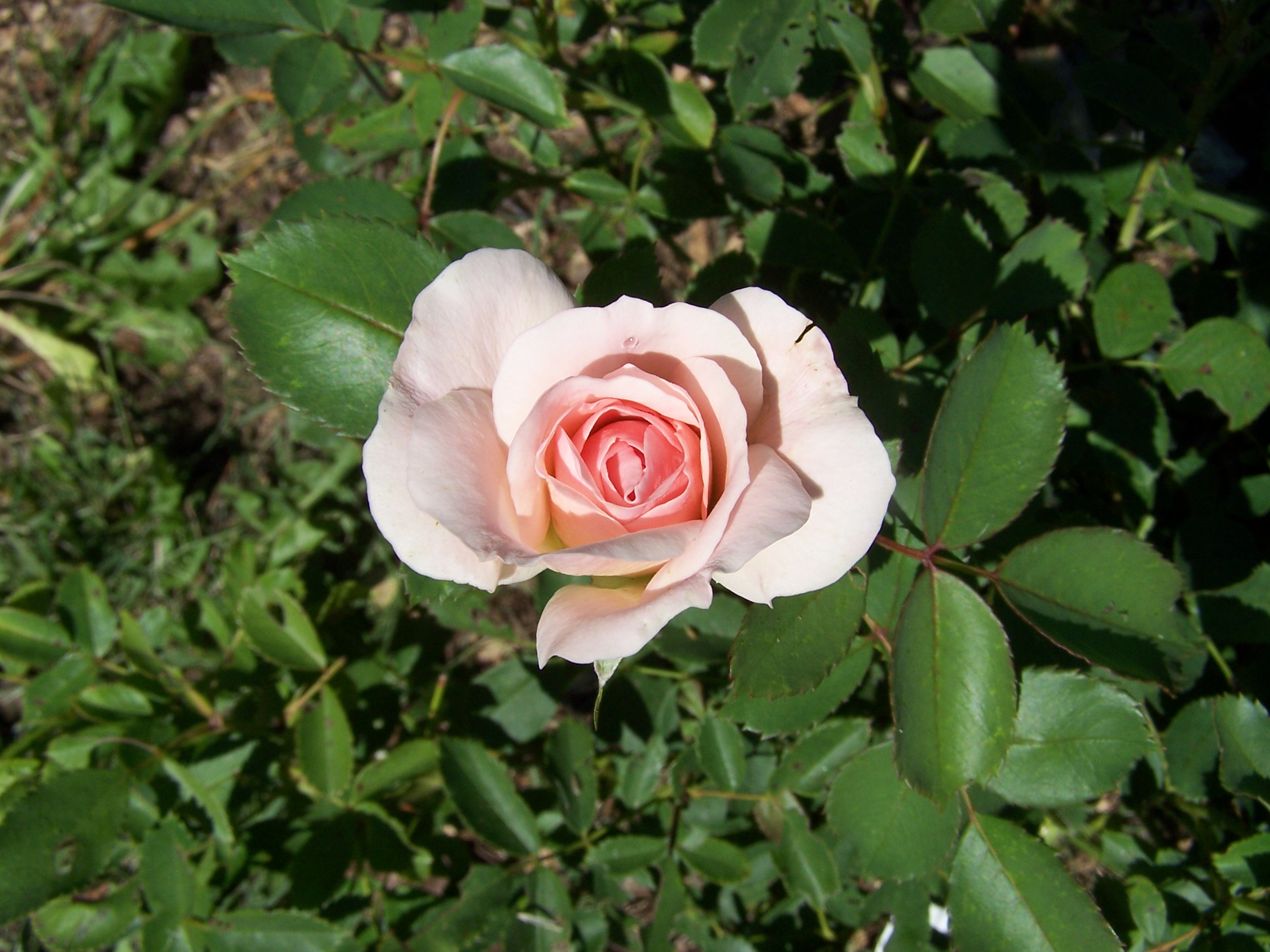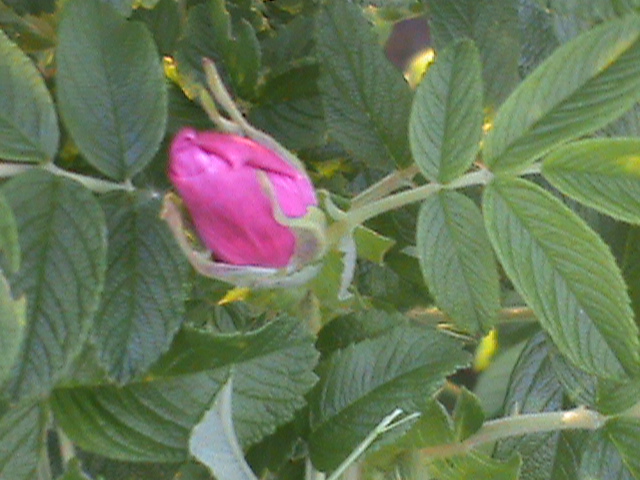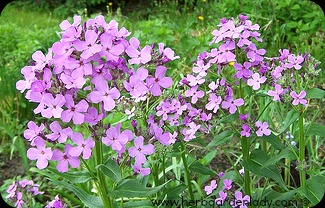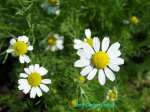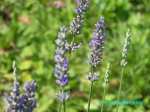Edible Flowers
Which Ones Are Edible?
Borage Chives Dandelion Dill Elderberries
With so many herb flowers to choose from where do you start? Color, flavor, and herb uses, but most importantly grown pesticide-free and wild crafted away from busy roads.
- Basil, sweet, Basil Purple Ruffle, Borage, Calendula, Chicory, Chives
- Clove pink, Dandelion, Day Lilies, Echinacea, Elderberry, Hollyhock
- Hyssop, Lavender, Mallow, Marshmallow, Nasturtium, Red Clover,
- Rose, Rosemary, Sage, Sweet Rocket, Sweet Violet, Thyme,
- Viper’s Bugloss
Basil, sweet - Ocimum basilicum, Labiatae
Annual, tender, height 18”, small whitish flowers appearing in late summer, aromatic, sweet tasting, pinch off to keep leaf growth growing and maintaining optimal flavor.
Basil, Purple Ruffle – Ocimum basilicum, O.b. ‘Purpurascens’, Labiatae
Annual - tender, height 18”, dark, crinkled purple leaves with good medium pale pink flowers,aromatic, sweet tasting.
Borage – Borago officinalis, Boragninaceae
Annual, hardy, height 1- 2 feet 6 inches, open sunny position, may need staking, flowers mid-summer, light cucumber taste
Many uses in salads, frozen ice cubes of summer drinks, a necklace, dried, decorations for desserts such as cakes when crystallized or as a garnish to ice cream.
Calendula – Calendula officinalis, Marigold, Compositae
Annual, hardy, and height 12 – 20 inches, flower late in summer, reseeds itself, Warning! Make sure not to eat Tagets as they are toxic when eaten.
Tangy flavor, add to rice, soups, cheeses, yogurt, butter, omelets, milk dishes, cakes and sweet breads. Use as a garnish to vegetable or fruit salads or meat platters for a festive look.
Chicory – Cichorium Intybus, Compositae
Perennial, deep rooted, height 5 feet with clear blue fluted petals. You see it growing on roadsides or grassy fields.
Flower: Used in salads and pickle buds. Related to Belgian endives - when roots are forced to grow and the head is covered or blanched in a warm and dark area.
Chives - Allium, Liliaceae
Perennial, hardy bulbs, height 8 inches – 3 feet, white and purple edible flowers, flowers late spring till late summer if kept trimmed, cut and divide and can be grown indoors.
Flowers: Pick flowers as they open and sprinkle florets on salads.
Clove pink – Dianthus caryophyllus, Caryophyllacaea
Perennial, height 1 – 3 feet, related to the carnation family
Flowers – clove scented use to flavor wines and ales. Clove pink syrup is made by infusing the petals in a hot sugar syrup use on fruit salads or baked fruits. Add petals to salads, sandwiches and fruit desserts. Make flavored sugar, jam, or vinegar.
Dandelion - Taraxacum officinale, Asteraceae Perennial, extremely hardy, height 20 inches, serrated basal leaves forming a rosette pointing downward so water goes to the root, hollow stalks, and yellow, golden flowers loved by bees.
Flower: You can make jellies, pies, muffins, with eggs, pancakes, cookies, with burgers, with other vegetables, wine, cordial, fizz, beer, child’s head flower wreath.
Day lilies – Hemerocallidaceae sp, Liliaceae
Perennial – This has a fibrous root and a hardy herbaceous plant, height 6 inches to 3 feet. Flowers in March in the deep South and California, but later in May or June for the northern zones. There are many colors to choose from except for true blue or true white as of yet.
Flower: These edible flowers are eaten raw or cooked. Their flavor is mild with pale colors of yellow and orange; otherwise the darker colors tend to be a little bitter. (But bitterness is good for digestion). Add it to a salad for some extra crunch and a nice sweet taste because of the nectar at the base. Or dry the flowers and use as a thickener for soups and sauces. If used this way for a thickener pick when they are withered and closed.
Flower buds: Eat like peas, raw or cooked and they taste somewhat like peas. The taste has also been compared to green beans and eggplant, used in Chinese cooking. Or dry them and make a relish. Good edible flower and edible plant source, rich in iron, easy to digest and nutritious.
Echinacea - Echinacea angustifolia, E. purpurea, and E. pallida, Asteraceae
Perennial, height 20 inches with daisy-like purple flowers, (note: deer love to eat the flower tops)
Flower: infuse for a tea used for cold relief. Echinacea is active, dry it and then pulverize to a power and sprinkle on food and drinks. Try some young buds and feel the tingle on your tongue from fresh Echinacea.
Elderberry - Sambucus nigra, Caprifoliaceae
Perennial, this is an extremely hardy deciduous large shrub or small tree, with oval, serrated leaves, and height between 12 – 15 – 33 feet. It depends on which variety you purchase. The flowers have a beautiful sweet scent and some have a lemony sweet scent. Starts blooming in June.
Flower - Cooking: These edible flowers are used to make elderberry muffins, elderflower crepes, Hydromel (Mastering Herbalism), milkshake, Pink Elderflower Champagne and Elderflower sparkler (Geraldene Holt’s Complete Book of Herbs), and cordials.
Edible Flowers - Teas and Jellies
Hollyhock - Alcea rosea, Malvaceae
Biennial or perennial used in a traditional cottage garden, height 10 feet with large double flowers, white or pink. Flowers from July to September, not frost tender. An edible flower that is hardy to about 17 degrees Fahrenheit with colors of purple, red or yellow.
Flower: petals and edible flowers are added to salads. Infuse to make a refreshing tea. Remove the center stamen and any green bits before eating. Crystallize the flower to decorate of eat with fruit salads or puddings. You can make flavored syrup with this edible flower too.
Hyssop - Hyssopus officinalis, Labiatae
Perennials, hardy semi-evergreen sub-shrub, height 18 inches to 4 feet, with beautiful white, pink, rich blue or purple doubled flowers. Loved by bees and butterflies. Hyssop can be grown indoors.
Flowers: Toss in salads, cough syrup made with an infusion of the flowers and combined with mullein flowers or licorice. An edible herb used as vinaigrette, soups, summer green salad, stuffing with pork, or as a garnish.
Lavender – Lavandula angustifolia (L. officinalis or L. vera), Labiatae
Perennial, evergreen shrub, height 18 inches to 3 feet, small, scented, lavender-blue or white flowers blooming in spikes 2 – 6 inches long during the summer.
Flowers: Angustifolia means, “narrow-leaved.” Use this species for cooking because of the aroma, flavor and it’s the best tasting.
This edible flower use it to flavor jams and jellies, sweet desserts, fragrant savory stews. Crystallize the flowers for special cakes and fruit desserts. Make lavender floral vinegar to use with fruit desserts or in cosmetic use.
|
Mallow, common – Malva sylvestris Biennial or Perennial, hardy herbaceous, height up to 4 feet Flower: Use in drinks and herbal teas or in salads with its purple edible flowers for beauty and interest to any culinary dish. |
|
Nasturtium – Tropaeolum majus, Tropaeolaceae Annual, height 6 to 12 inches tall, climbing plant growing to 10 feet, useful companion plant. Flower: Add to salads and sandwiches, it adds a bite to your meal. Use as a garnish to any special entrée. |
Red Clover
- Trifolium pratense, Fabaceae
Perennial, hardy, height up to 16 inches.
Flower: Drink as a tea and blend with other herbs to improve blood and skin problems. Warning! Hemophiliacs or people with “thin” blood should not use red clover on a regular basis as this may irritate the condition.
Pink to purple with a white crescent marking with volatile oil used in treating menopausal problems.
|
Rose – Rosa species, Rosaceae Perennial, hardy shrub, height 4 – 8 feet, many beautiful and exquisite colors. Flowers: One of the best edible flowers with scented petals and bitter white heel removed this is one of the best herbs to use in cooking, decorations, cosmetic, aromatic and medicinal. Add to salads, apple, and cherry, strawberry, raspberry or black currant pie. Make delicious syrup, vinegar, sorbets and delicate sweets with this fragrant herbal plant. |
Rosemary - Rosmarinus officinalis, Labiatae
Perennial, tender evergreen, height 3 – 6 feet
Flower: You can toss in salads, crystallize for a garnish or make sugar-puree for dessert. Fragrant flowers come in blue, pink or white with a sweet piney scent.
Sage – Salvia officinalis, Labiatae
Perennial is a hardy evergreen shrub reaching 1- 2 feet in height.
Flower: Throw a couple edible flowers in a salad or infuse for a light balsamic tea with dinner. Flowers are generally mauve-blue, white and pink are less common.
|
Sweet Rocket – Hesperis matronalis, Cruciferae Perennial or biennial, height 3 feet. Flower: Pick a few and toss in a salad or use as a decoration to add a special touch to your dessert. This Cottage flower has a sweet, aromatic scent, stronger in the evening hours with purple, mauve or white flowers. |
Sweet Violet – Viola odorata, Violaceae
Perennial, hardy, height 4 – 6 inches, a real spreader, good ground cover plant.
Flower: Crystallize petals for a sweet snack or an elegant touch to a special dessert such as cakes, puddings or ice cream. Eat the edible flower raw in salads or make sweet violet syrup to add to fruit desserts.
Thyme – Thymus species, Labiatae
Perennial, creeping evergreen shrub, height 3 – 15 inches
Flower: Toss just a few edible flowers with leaves in salads, stews, sauces or soups for a lemony, citrus or piney flavor. Fresh flowers have a strong antiseptic volatile oil with effective anti-fungal, expectorant and anti-aging medicinal properties.
Viper’s bugloss – Echium vulgare , Boraginaceae
Biennial, closely related to Borage herb, height 2 – 3 feet
Flower: Add to salads, make into a delicious cordial or crystallize them and add to your beautiful homemade desserts.
Purple...pinks, mauve, lavender, violet, and periwinkle, indigo, sweet and mild. Blue...does that have a taste?
Umm...yes!
Learn about...herb planters
Borage Chives Dandelion Dill Elderberries
